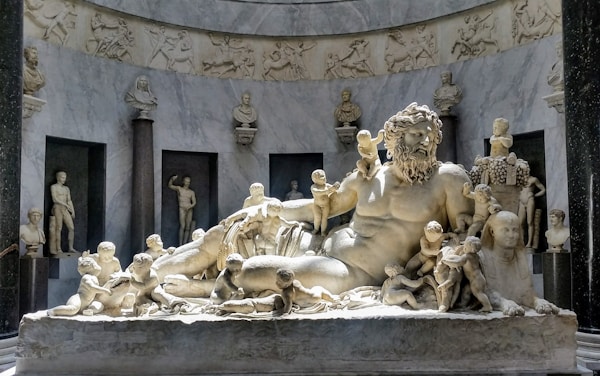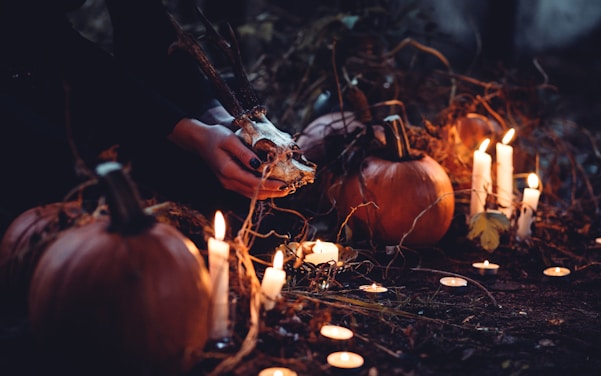
The Main Categories of Magic Systems
I’m one of those people who love to focus on how a world works when I read a story. Because, when done right, it really feels like this world exists and could be hiding inside an antique closet — or down a rabbit hole. What I mean to say is, worldbuilding is important because it lets authors create a believable world for a reader to enjoy. The whole concept of worldbuilding can be quite extensive, so today I want to focus on one particular aspect of building a fictional world. One I think is important for the fantasy genre. So today I’m going to talk about the main categories of magic systems!
As a quick introduction, a magic system is a set of rules that guides what magic can or can’t do in your world. It dictates what kinds of magic exist in the world, their limitations, and who can use them for example. Author Brandon Sanderson has a very interesting take on this. He wrote what he calls The Laws of Magic. These dictate what the reader knows about magic in the story. It’s basically how much detail goes into the magic portion of worldbuilding. The one that particularly interests me today is The First Law. In it, he sees magic as a kind of spectrum. There is hard magic, soft magic, and the middle ground.
Hard magic has very rigid boundaries that the reader understands. In it, we know who uses magic, how, and what boundaries it has. On the other side there is soft magic. It basically has no rules that the reader can discern — they just know and accept that the magic is the way it is. The middle ground is exactly that. It does have rules, but they aren’t fully explored.
Okay, now that you know a bit more about magic systems in general, let’s get into the categories. Although there are definitely way more types out there, I will talk about those I think are the most common and give you an example. These aren’t the same as hard magic or soft magic — they group magic by what permits the user to have magic, such as spells, the gods, those kinds of things. Lastly, I want to say that there can be several magic systems in a single story. They often overlap and create their own system — which is what makes those books unique!
So without further ado, here are the most common types of magic systems!
Main Categories of Magic Systems
Magic From the Gods

In this category, what allows characters to use magic are the deities of that specific world. These abilities are usually given as a gift from the gods, and they allow magic users to control many kinds of magic, such as elemental — so it can definitely overlap with other categories.
This can be seen in books like Children of Blood and Bone by Tomi Adeyemi. In this book, the Maji are divided into clans. Each clan is associated with a deity and an aspect of the natural world. So, the Maji are connected to those deities and can control things like death, dreams, the elements, animals, light, health, time, etc.
Magic From Words

When magic comes from words, we often call them spells. This type of magic draws its power from saying or writing specific words. Oftentimes, books with witches and wizards will fall into this category — and overlap with magic from rituals, which is a tiny bit different.
Although I’m sure there are plenty more examples out there, I can’t think of a better one than A Darker Shade of Magic by V.E. Schwab. There are other types of magic, but our main character — Kell — is an Antari. They use blood to perform their magic, but they also must speak specific words for it to work. As Travars for example, is the phrase that allows Antari to travel between worlds.
Magic From the Elements

Also known as elemental magic, this magic system allows its users to control the elements. Yep, it’s that simple. The traditional ones are air, fire, earth, and water — but other elements such as light and darkness are often used too.
Forest of Souls by Lori M. Lee is a great example. It doesn’t have your classic elemental magic — instead, the characters have different abilities related to the manipulation of light and shadows! We have a handy list with more elemental fantasy recommendations that you might enjoy, too.
Magic From Rituals

This category is similar to word-based magic because it includes the use of specific words. But, as the title says, it also requires a ritual. And that means taking certain steps in a specific order and an appropriate environment.
An example would be Ninth House by Leigh Bardugo. In it, Yale’s secret societies perform all kinds of occult rituals depending on which House they belong to. For example, the First House specializes in rituals for divination.
Magic From Supernatural Beings

Last but not least, we have magic that comes from anything supernatural. That tends to be either spirits, or angels and demons.
The most popular example for this category has to be the Shadowhunters books by Cassandra Clare! In the series, even though they use runes for magic, the power comes from their connection to the angel Raziel.
Those were the main categories of magic systems! It’s fun to watch out for them — as readers and writers — to get a better appreciation and understanding of the story.
You might also like these posts about the art of worldbuilding and worldbuilding tools. Plus, check out our sci-fi/fantasy archives for magical book recommendations.









